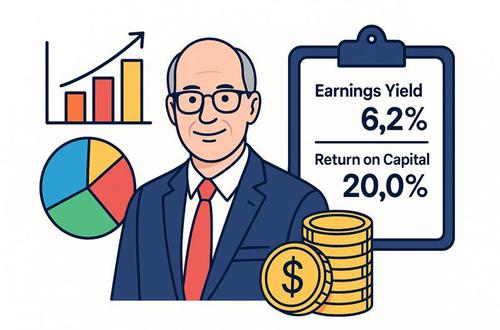MarketLens
Election-Proof Your Portfolio: A Guide to Investing During U.S. Presidential Races
Key Takeaways
- Historical data suggests minimal long-term impact of U.S. presidential elections on overall stock market performance.
- Economic fundamentals like GDP growth, inflation, and consumer sentiment are more influential on market returns than political outcomes.
- Sector-specific volatility is common during election years, influenced by candidates’ policy proposals.
- The presidential election cycle theory suggests predictable patterns in market performance over the four-year cycle.
- Investors are advised to maintain diversified portfolios and focus on long-term strategies to navigate election-related uncertainties.
Introduction
Historical Market Performance During Election Years
General Trends
Historical analysis reveals that U.S. presidential elections have a minimal long-term impact on stock market performance. According to U.S. Bank investment strategists, market returns over the past 75 years have been more dependent on economic and inflation trends rather than election outcomes.
Election Year Returns
From 1928 to 2016, the average return during presidential election years was 11.3%, with Republicans averaging 15.3% and Democrats 7.6%. A study by T. Rowe Price found similar average returns of 11% for election years from 1928 to 2023, with 83% of those years resulting in positive returns.
Post-Election Performance
Market performance six and twelve months after elections tends to be lower compared to non-election years, indicating potential post-election dips. However, the market generally trends upwards over the long term.
Presidential Election Cycle Theory
This theory suggests a predictable pattern over the four-year cycle:
- Year 1 (post-election year): Markets typically dip due to new policy implementation.
- Year 2 (midterm election year): Increased volatility; historically the weakest year.
- Year 3 (pre-election year): Usually the strongest year, as presidents seek to boost the economy.
- Year 4 (election year): Performance varies based on campaign dynamics and policy changes.
Sector-Specific Impacts
Different sectors react variably to election outcomes, influenced by candidates’ proposed policies:
Healthcare
Highly volatile during election years due to potential healthcare reform proposals. Changes to Medicare, Medicaid, or pharmaceutical regulations can lead to sharp swings in healthcare stocks.
Energy
Energy stocks are sensitive to candidates’ policies on fossil fuels and renewable energy. Pro-oil policies during the Trump administration led to positive reactions, while the Biden administration’s focus on clean energy has influenced market dynamics.
Technology
Generally more stable but can face volatility due to concerns over potential regulation, especially regarding antitrust laws and data privacy.
Financials
Sensitive to changes in legislation. For example, financial stocks initially declined after the 2008 election but rebounded due to stabilization policies.
Defense
Defense spending is another critical area influenced by election outcomes. Increased geopolitical tensions and rising defense budgets globally present opportunities for defense contractors.
Current Market Dynamics and 2024 Election Outlook
Economic Indicators
As of August 2024, key economic indicators suggest a potential advantage for the Republican candidate:
- GDP Growth: Annualized rate slowed to 1.3% in Q1 2024, down from 3.4% in Q4 2023.
- Consumer Concerns: 64% of consumers are mainly concerned about inflation and the economy (Morgan Stanley Research).
- Consumer Sentiment: The University of Michigan consumer sentiment index dropped to 66 in July 2024, below the historical election-year average of 85.7.
Sector Performance
The S&P 500 is up 14% year-to-date, exceeding the typical average for presidential election years. The technology sector has seen a 25% increase, while healthcare has risen by 10%, both outperforming historical averages.
Policy Proposals
Key areas to monitor include tax policies, defense spending, healthcare reform, and regulatory changes. Proposed extensions to the 2017 Tax Cuts and Jobs Act, potential trade barriers, and immigration policies could significantly impact market performance.
Strategic Considerations for Investors
- Diversification: Maintain a diversified portfolio across various asset classes and sectors to mitigate risks associated with election-driven volatility.
- Long-Term Focus: Avoid making impulsive decisions based on election outcomes. Historical data shows markets tend to recover after periods of political uncertainty.
- Dollar-Cost Averaging: Invest a fixed amount regularly to reduce the impact of market fluctuations and benefit from potential long-term growth.
- Emergency Funds: Maintain an emergency fund, especially during periods of heightened market volatility. High interest rates on savings accounts provide an opportunity to earn returns on cash reserves.
- Professional Guidance: Seek advice from financial advisors for personalized strategies based on individual risk tolerance and financial goals.
Conclusion
While U.S. presidential elections introduce uncertainty and potential volatility, long-term market performance is more influenced by economic fundamentals than political outcomes. By understanding broader economic trends and sector-specific impacts, investors can make informed decisions and position themselves for potential market opportunities during election years. Maintaining a diversified portfolio, focusing on long-term strategies, and seeking professional guidance are key to navigating election-related uncertainties successfully.
Related Articles
2025’s Top Sectors: Your Savvy ETF Guide
Category
You may also like
No related articles available
Breaking News
View All →No topics available at the moment





